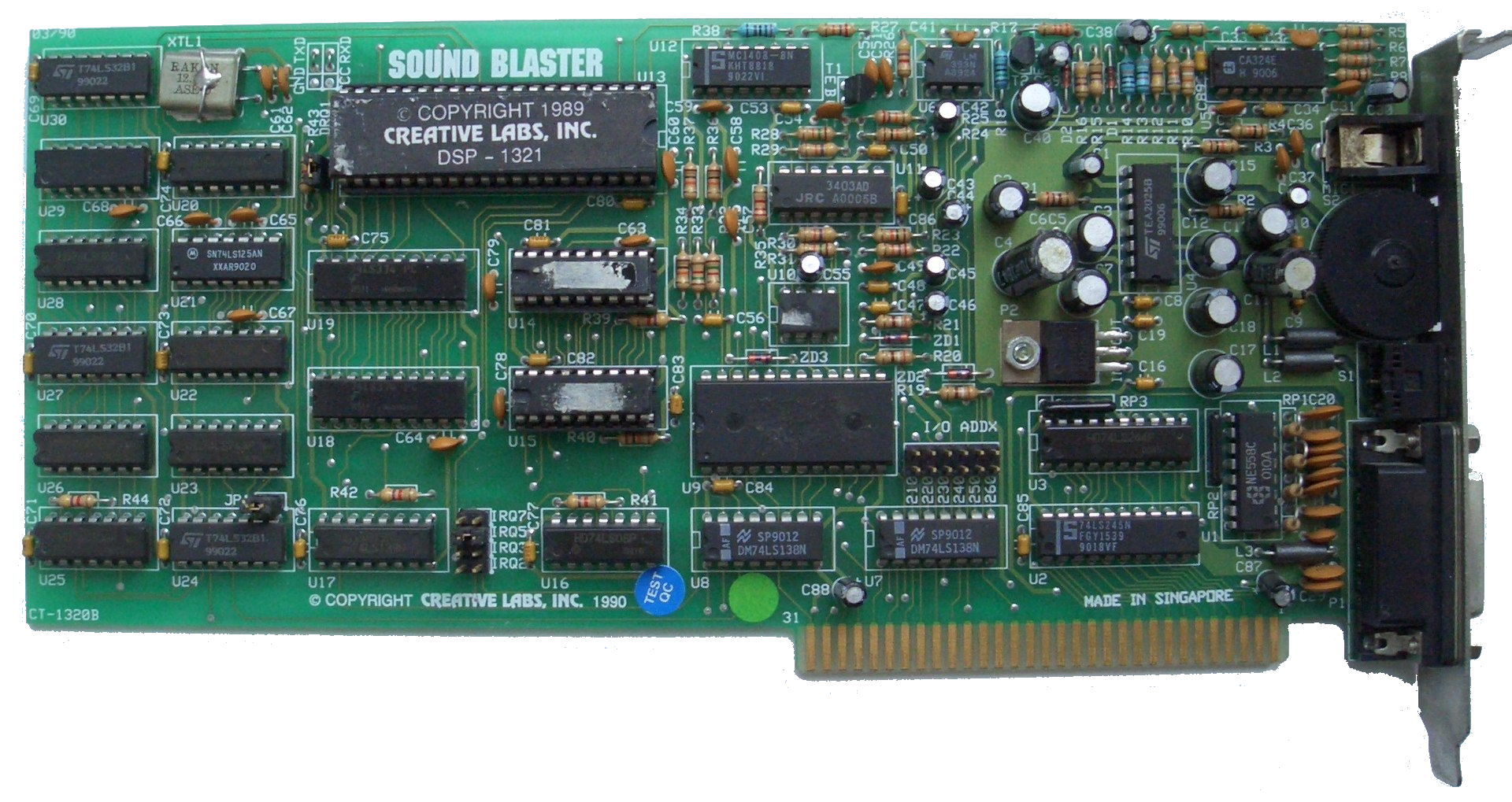Sound Blaster / Sound Blaster Pro
The original Sound Blaster v1.0 and v1.5 (CT1310, CT1320A/B) were released in 1989 as the successor to their Game Blaster. First announced in September 1988, the Sound Blaster had an 11-voice FM synthesizer which made use of the Yamaha YM3812 chip, often referred to simply as the OPL2 chip - this was the same chip used in the Ad Lib card, so it was 100% Ad Lib compatible. This meant that all games which supported Ad Lib would produce similar audio output quality on the Sound Blaster.

Sound Blaster 1.0, picture (c) Crossfire Designs
But what made it different was the "DSP", or Digital Sound Processor, which is what Creative Labs called the "digital audio" part of the card. This brand new feature brought the ability to play back mono sampled sound at up to 22 kHz sampling frequency (about the same as FM radio quality, so quite poor by today's standards), and record at 12 kHz (which was similar to AM radio quality - even worse). In reality, this transformed DOS games, as this sampled sound was used to introduce sound effects into games while simultaneously playing music via the OPL2 (FM synthesis) chip. For backward compatibility with the earlier C/MS a.k.a. Game Blaster card, the C/MS chips [as they became known] were installed in sockets on the board.
In October 1991, Sound Blaster v2.0 (CT1350) was launched which added support for "auto-init" (automatic initialising) DMA which allowed the card to produce a continuous loop of double-buffered sound output. The sampling rate capabilities were also increased to 44 kHz (CD quality) for playback, and 22 kHz for recording. This new CT1350 used fewer, more tightly integrated components, as hence was a physically shorter card than its predecessors. The changes from v1.5 to v2.0 were all in the DSP chip - this meant that existing owners of prior models could upgrade to a v2.0 card by purchasing the v2.0 DSP chip from Creative.
A Word About Board Revisions
Most Creative Labs boards have their board revision number etched in the bottom-left of the component side of the board.
One member on Vogons reported that Creative Labs' board revisions appear to be pretty logical in their structure. The first two digits represents the major and minor revision of the board, and the last three digits refer to the year (in the 1990s) and week number it was signed off.
For example, the first Sound Blaster Pro 2 (CT2600) board revision is 49219. The second revision is 69237. This means the first was rev 4.9 which was signed off in week 19 of 1992. The second was rev 6.9 which was signed off in week 37 of 1992.
The table below lists the Sound Blaster and Sound Blaster Pro cards. Click on a link to go to the dedicated page for that card:
| ISA Cards | MCA Cards |
|---|---|
| Sound Blaster 1.0/1.5 (CT1300, CT1310, CT1320) Sound Blaster 2.0 (CT1350) Sound Blaster Pro (CT1330) Sound Blaster Pro II (CT1600, CT1680, CT1690, CT2600) |
Sound Blaster Pro II (CT5330) |